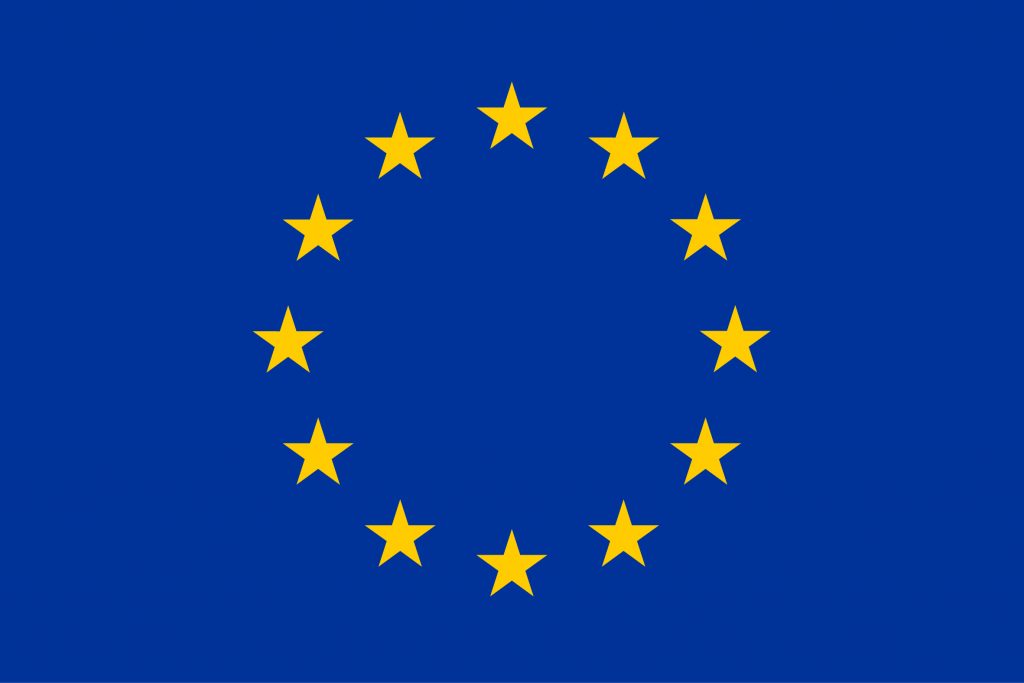ITP >> Bibliography
Bibliographic references in the area of cultural tourism management
Publications from the EU
European Commission, Directorate-General for Internal Market, Industry, Entrepreneurship and SMEs, Transition pathway for tourism – Taking stock of progress by 2023, Publications Office of the European Union, 2024, https://data.europa.eu/doi/10.2873/775069
European Commission, Directorate-General for Internal Market, Industry, Entrepreneurship and SMEs, Study on the feasibility of possible initiatives at EU level and establishment of a multi-stakeholder platform onquality of tourism accommodation – Final study, Publications Office of the European Union, 2022, https://data.europa.eu/doi/10.2873/21829
European Committee of the Regions, Commission for Natural Resources, Marcinkowska, I., Maj, A., Sidło, K., Tourism and rural development, European Committee of the Regions, 2024, https://data.europa.eu/doi/10.2863/099682
Abbruzzo, A., Ferrante, M. & De Cantis, S. (2021). A pre-processing and network analysis of GPS
tracking data. Spatial Economic Analysis, 16 (2), 217-240.
Ahas, R., Aasa, A., Mark, Ü., Pae, T., & Kull, A. (2007). Seasonal tourism spaces in Estonia: Case
study with mobile positioning data. Tourism Management, 28(3), 898-910.
Arunj N. (2015), “Local Community-involvement in tourism: a content analysis of websites of wildlife resort” in Atna-Journal of Tourism studies, India, Vol. 10, pp.13-21.
Behsudi, A. (2020). Tourism-dependent economies are among those harmed the most by the pandemic, December 2020. IMF Finance & Development, pages 36–39.
Bibracte EPCC (2021). Bibracte and its territory: Tourism statistics review 2018-2019.
Borowiecki, K. J., Pedersen, M. U., and Mitchell, S. B. (2023a). Using big data to measure cultural tourism in Europe with unprecedented precision. Working paper, Scandinavia Working Paper series, S-WoPEc.
Borowiecki, K. J., Pedersen, M. U., Mitchell, S. B., and Khan, S. A. (2023b). Final Findings Analysis Report INCULTUM. Deliverable D3.3, Visiting the Margins. INnovative CULtural ToUrisM in European peripheries.
Caldeira, A. M., & Kastenholz, E. (2020). Spatiotemporal tourist behaviour in urban destinations: A
framework of analysis. Tourism Geographies, 22(1), 22-50.
Cambon, J., Hernangómez, D., Belanger, C., and Possenriede, D. (2021). tidygeocoder: An r package for geocoding. Journal of Open Source Software, 6(65):3544. R package version 1.0.5.
Capelli G. (2016), Manual for participatory touirism connecting community and culture through storytelling, Croatia, Croatian Ministry of Tourism.
Casado-Díaz, A. B., Navarro-Ruiz, S., Nicolau, J. L., & Ivars-Baidal, J. (2021). Expanding our
understanding of cruise visitors’ expenditure at destinations: The role of spatial patterns, onshore
visit choice and cruise category. Tourism Management, 83, 104199.
Conticelli, E.; De Luca, C.; Egusquiza, A.; Santangelo, A.; Tondelli, S., 2019. Inclusion of migrants for rural regeneration through cultural and natural heritage valorization. In C. Gargiulo & C. Zoppi (Eds.), Planning, nature and ecosystem services, Naples: FedOAPress, pp. 323-332.
Coriat, B., 2015. Le retour des communs & la crise de l’idéologie propriétaire. Paris: Les liens qui libèrent.
De Cantis, S., Ferrante, M., Kahani, A., & Shoval, N. (2016). Cruise passengers’ behaviour at the
destination: Investigation using GPS technology. Tourism Management, 52, 133-150.
De Luca, C.; López-Murcia, J.; Conticelli, E.; Santangelo, A.; Perello, M.; Tondelli, S., 2021. Participatory Process for Regenerating Rural Areas through Heritage-Led Plans: The RURITAGE Community-Based Methodology. Sustainability, 13, p. 5212.
Domènech, A., Gutiérrez, A., & Anton Clavé, S. (2020a). Cruise passengers’ spatial behaviour and
expenditure levels at destination. Tourism Planning & Development, 17(1), 17-36.
Domènech, A., Gutiérrez, A., & Clavé, S. A. (2020b). Built environment and urban cruise tourists’
mobility. Annals of Tourism Research, 81, 102889.
Eldway, S., Azzam, Y.A., Al-Hagla, K. S.,2020. Role of public participation in heritage tourism development in Egypt: a case study of Fuwah City. In: Sustainable Development and Planning XI. Transactions on Ecology and the Environment, vol. 241 ,27 – 43 pp.
Ellegård, K. (2018). Thinking Time Geography: Concepts, Methods and Applications. (1st ed.)
Routledge. https://doi.org/10.4324/9780203701386
Eccleston, R.E., Hardy, A. & Hyslop, S. (2020). Unlocking the potential of tracking technology for cocreated tourism planning and development: insights from the Tourism Tracer Tasmania project, Tourism Planning & Development, 17:1, 82-95, DOI: 10.1080/21568316.2019.1683884
European Commission (2021). Regional impacts of the COVID-19 crisis on the tourist sector: final report. Publications Office.
Eurostat (2022a). Gross domestic product (GDP) at current market prices by NUTS 3 regions. Online data code: NAMA_10R_3GDP. https://ec.europa.eu/eurostat/databrowser/view/nama_10r_3gdp/default/table?lang=en. Last data update: 21/02/2023.
Eurostat (2022b). Population density by NUTS 3 region. Online data code: DEMO_R_D3DENS. https://ec.europa.eu/eurostat/databrowser/view/DEMO_R_D3DENS/default/table?lang=en. Last data update: 19/04/2023.
Eurostat (2022c). Unemployment rates by sex, age, educational attainment level and NUTS 2 regions (%). Online data code: FST_R_LFU3RT. https://ec.europa.eu/eurostat/databrowser/view/LFST_R_LFU3RT/default/table?lang=en. Last data
update: 14/09/2023.
N.G. (2019), “Brand management of territories: socio-cultural factors of designing a city brand” in The European Proceedings of Social & Behavioural Sciences, Future Academy, UK.
Ferrante, M., De Cantis, S., & Shoval, N. (2018). A general framework for collecting and analysing the
tracking data of cruise passengers at the destination. Current Issues in Tourism, 21(12), 1426-1451.
Goebel, K; Camargo-Borges, C; Eelderink, M., 2020. Exploring participatory action research as a driver for sustainable tourism. Int J Tourism Res., 22, p. 425– 437
Gong, L., Sato, H., Yamamoto, T., Miwa, T., & Morikawa, T. (2015). Identification of activity stop
locations in GPS trajectories by density-based clustering method combined with support vector
machines. Journal of Modern Transportation, 23(3), 202-213.
Grinberger, A. Y., & Shoval, N. (2019). Spatiotemporal contingencies in tourists’ intradiurnal mobility
patterns. Journal of Travel Research, 58(3), 512-530.
Hall, C. M. (2015). On the mobility of tourism mobilities. Current Issues in Tourism, 18(1), 7-10.
Han, Y., Yang, G., & Zhang, T. (2021). Spatial-temporal response patterns of tourist flow under
entrance tourist flow control scheme. Tourism Management, 83, 104246.
Hardy, A., Birenboim, A., & Wells, M. (2020). Using geoinformatics to assess tourist dispersal at the
state level. Annals of Tourism Research, 82, 102903.
Hardy, A., Vorobjovas-Pinta, O., Wells, M., Grimmer, L., Grimmer, M. (2021). Measuring cruise
passenger dispersal through technology, Annals of Tourism Research, 103319, DOI:
10.1016/j.annals.2021.103319.
Hardy, A., Hyslop, S., Booth, K., Robards, B., Aryal, J., Gretzel, U., & Eccleston, R. (2017). Tracking
tourists’ travel with smartphone-based GPS technology: a methodological discussion. Information
Technology & Tourism, 17(3), 255-274.
Huang, Y.; Liu, C.S., 2017. Moderating and mediating roles of environmental concern and ecotourism experience for revisit intention. Int. J. Contemp. Hosp. Manag., 29, p. 1854–1872
Jaakson, R. (2004). Beyond the tourist bubble? Cruiseship passengers in port. Annals of Tourism
Research, 31(1), 44-60.
Joppe M. (1996), “Sustainable community tourism development revisited” in Tourism Management, ELSEVIER, Great Britain, vol. 17, pp. 475-479.
Lau, G., & McKercher, B. (2006). Understanding tourist movement patterns in a destination: A GIS
approach. Tourism and Hospitality Research, 7(1), 39-49.
Lemmi E. (edited by) (2015), Turismo e management dei territori. I geoitinerari, fra valori e Progettazione turistica, Bologna, Pàtron Editor.
Lew, A., & McKercher, B. (2006). Modeling tourist movements: A local destination analysis. Annals of
Tourism Research, 33(2), 403-423.
Lewis, G. K., Hardy, A., Wells, M. P., & Kerslake, F. L. (2021). Using mobile technology to track wine
tourists. Annals of Tourism Research Empirical Insights, 2(2), 100022.
Lloyd, S.; Moore, J., 2015. Sedimented histories: connections, collaborations and co-production in regional
history. History Workshop Journal, 80/1, pp. 234-248.
Marcandella, E.; Guèye, K.; Wannenmacher, D., 2020. Dépasser les tensions et tisser des liens autour d’un Tiers-
Lieu: un défi pour devenir un PTCE exemplaire. L’exemplarité dans l’économie sociale et solidaire: initiatives inspirantes ert modèles novateurs, Reims : EPURE, pp. 301-323.
McKercher, B. (2018). The impact of distance on tourism: a tourism geography law. Tourism
Geographies, 20(5), 905-909.
McKercher, B., Hardy, A. & Aryal, J. (2019) Using tracking technology to improve marketing: insights
from a historic town in Tasmania, Australia, Journal of Travel & Tourism Marketing, DOI:
10.1080/10548408.2019.1580243
Merkel Arias, N.; Kieffer, M., 2022. Participatory Action Research for the assessment of Community-Based
Rural Tourism: a case study of co-construction of tourism sustainability indicators in Mexico. Current Issues in Tourism, pp. 1-18.
Mora H, 2022. Désastres touristiques, Paris : L’Echappée
Navarro-Ruiz, S., Casado-Díaz, A. B., & Ivars-Baidal, J. (2020). Modelling the intra-destination
behaviour of cruise visitors based on a three-dimensional approach. Journal of Destination Marketing
& Management, 18, 100470.
Negrusa A. et alii (2015), “Exploring gamification techniques and applications for sustainable tourism” in Sustainability, Switzerland, n. 7.
Ohe Y, 2021. Community based rural tourism and entrepreneurship, Cham: Springer
Ozcevik, O., Beygo, C., Akcakaya, I. (2010). Building capacity through collaborative local action: Case of Matra REGIMA within Zeytinburnu regeneration scheme. Journal of Urban Planning and Development, 136(2), 169-175.
Pyke, S.; Hartwell, H.; Blake, A.; Hemingway, A., 2016. Exploring well-being as a tourism product resource. Tourism Management, 55, pp. 94-105.
Rather, R. A., Hollebeek, L. D. & Islam, J. U. (2019). Tourismbased customer engagement: the
construct, antecedents, and consequences. The Service Industries Journal, 39(7-8), 519-540.
Richards G., Derek H. (edited by) (2000), Tourism and sustainable community development, Routledge, London.
Ritchie, H., Mathieu, E., Rodés-Guirao, L., Appel, C., Giattino, C., Ortiz-Ospina, E., Hasell, J., Macdonald, B., Beltekian, D., and Roser, M. (2020). Coronavirus pandemic (covid-19). Our World in Data. https://ourworldindata.org/coronavirus.
Rokos, D. (2001). Ολοκληρωμένη Ανάπτυξη στις Ορεινές Περιοχές. Θεωρία και Πράξη. (Integrated Development in Mountainous Areas. Theory and action.). The Proceedings of the 3rd Interdisciplinary Interuniversity Conference of the M.I.R.C. and of NTUA of M.I.R.C. ”Integrated Development in Mountainous Areas. Theory and Practice”, Metsovo Conference Center, June 7-10, 2001, pp. 79-140.
Rokos, D. (2004). Ολοκληρωμένη Ανάπτυξη της Ηπείρου. Προβλήματα, Δυνατότητες και Περιορισμοί. (The Integrated Development of Epirus. Problems, Possibilities and Limitations.). 4th Interdisciplinary Interuniversity Conference of the M.I.R.C. and of NTUA of M.I.R.C. The Integrated Development of Epirus, Metsovo, September 23-26, 2004.
Saglietto, A., D’Ascenzo, F., Zoccai, G. B., and De Ferrari, G. M. (2020). Covid-19 in Europe: the italian lesson. The Lancet, 395(10230):1110–1111.
Santos-Roldan, L.; Castillo Canalejo, A.-M.; Berbel-Pineda, J.-M.; Palacios-Florencio, B., 2020. Sustainable Tourism as a source of healthy tourism. International Journal of Environmental Research and Public Health.
Shoval, N., & Ahas, R. (2016). The use of tracking technologies in tourism research: the first decade.
Tourism Geographies, 18(5), 587-606.
Shoval, N., Kahani, A., De Cantis, S., & Ferrante, M. (2020). Impact of incentives on tourist activity in
space-time. Annals of Tourism Research, 80, 102846
Smith M.K. et alii (2006), “Cultural tourism, community partIcipation and empowerment” in Cultural Tourism in a changing world: politics, participation and (re)presentation, Cleveland – UK, Channel View Publications.
Vanhoof, M., Hendrickx, L., Puussaar, A., Verstraeten, G., Ploetz, T., & Smoreda, Z. (2017).
Exploring the use of mobile phone data for domestic tourism trip analysis. Netcom. Réseaux,
Communication et Territoires, 31(3/4), 325-372.
Xiao-Ting, H., & Bi-Hu, W. (2012). Intra-attraction tourist spatial-temporal behaviour patterns.
Tourism Geographies, 14(4), 625-645.
Zoltan, J., & McKercher, B. (2015). Analysing intra-destination movements and activity participation
of tourists through destination card consumption. Tourism Geographies, 17(1), 19-35.






